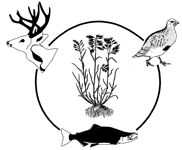Extension Wildlife & Fisheries Specialists Conferences

Triennial National Wildlife and Fisheries Extension Specialists Conference: 8th (1996)
Date of this Version
June 1996
Document Type
Article
Abstract
Ponds built in areas that have acid soils and soft water may not always perform well for fish production. Such ponds may benefit from liming if the water has a total alkalinity of less than 20 mg/1 (20 ppm). If alkalinity is more than 20 mg/1, liming may not be beneficial. Alkalinity measures the buffering capacity of the water and is usually a good indicator of productivity. Carbonates, bicarbonates, hydroxides, phosphates, and organic substances are the main components of water alkalinity. Water hardness is caused by calcium, magnesium, iron, and aluminum salts, most often in the form of carbonates, sulfates, or chlorides. Ponds that have water hardness concentrations of less than 20 mg/1 may also benefit from liming. Alkalinity and hardness can be measured with commercially available water test kits, or by State Fisheries or Extension Service Aquaculture Specialists. Generally, total alkalinities of 100-120 mg/I, water hardness concentrations of 100-250 mg/1, and pH values between 6.5-9.0 are considered desirable for freshwater fish production.


Comments
Published in W. Daniel Edge, ed. Proceedings of the 8th National Extension Wildlife and Fisheries Specialists Workshop: Educational Challenges for the 21st Century. [1996] Corvallis, Oregon: Oregon State University, 1998.